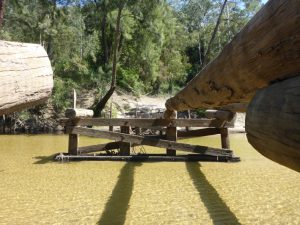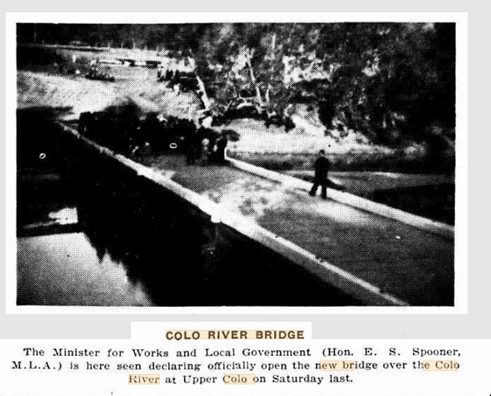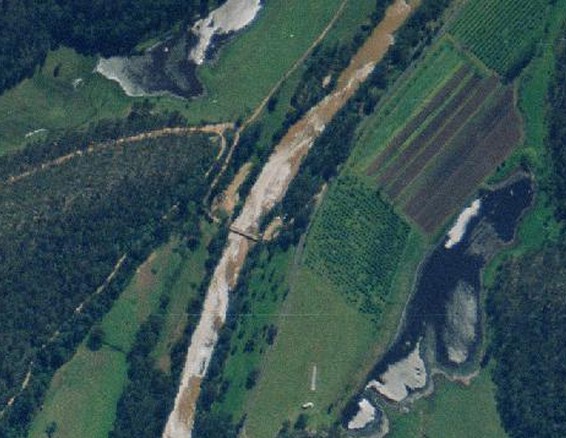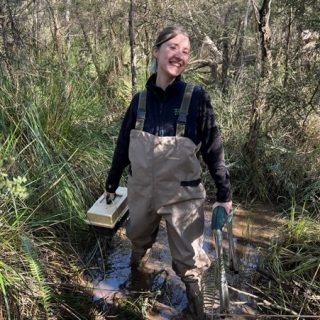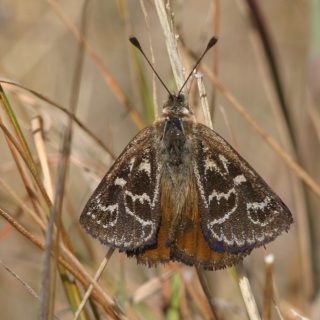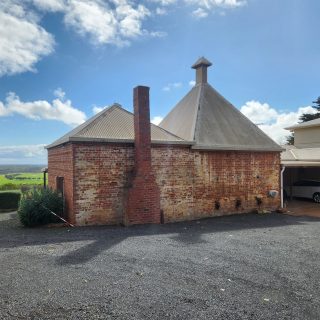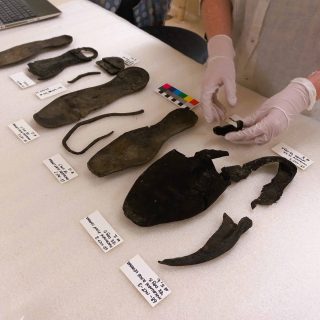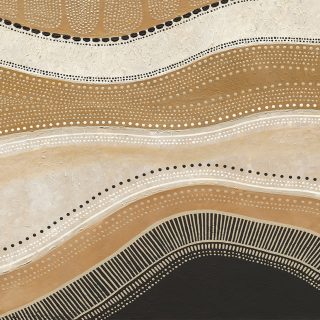Old Colo Bridge replaced and story salvaged
Even though a bridge is old, it doesn’t mean it should be heritage protected or conserved. The original wooden Upper Colo Heights Road Bridge in NSW is a great example of how interpretation and clever re-use of salvaged materials respected its history.

Old bridges are not always worth keeping
Even though a bridge is old, it doesn’t mean it should be heritage protected or conserved. The original wooden Colo Heights Road Bridge in NSW is a great example.
Biosis was commissioned by Hawkesbury City Council to undertake an Historical Heritage Assessment (HHA) and Statement of Heritage Impact (SoHI) on the Colo Heights Road Bridge which was badly damaged due to extraordinary floods in March 2021.
While the bridge itself was not deemed to have value, Biosis found the history and position of the bridge over a traditional water crossing deserving of historical recognition.
The new concrete bridge, built in 2023 with state funds, is a great example of how interpretation and design can help fill the gap when conservation isn’t feasible.
Why request an Historical Heritage Assessment (HHA) and Statement of Heritage Impact (SoHI)?
The original request was understandable given various parts of the upper Hawkesbury catchment, including Colo River, were some of the earliest colonised parts of Australia, alongside significant evidence of Aboriginal settlement of Darkinjung families along the river for tens of thousands of years.
Upper Colo is roughly 20 kilometres north of Richmond and 70 kilometres northwest of the Sydney’s central business district (CBD).
In addition to the location’s potential historical significance there are also other heritage protected bridges that cross the Dyarrubin | Hawkesbury River of which the Colo runs off, setting a potential precedent.
What is an Historical Heritage Assessment and Statement of Heritage Impact?
The first Historical Heritage Assessment report determined whether there was a likelihood of any heritage value at the project site and the second report, the Statement of Heritage Impact determined if there would be any significant impact of the proposed works on the site.
The proposed works included the demolition of the original damaged timber bridge and the construction of a new concrete one. View reports
What was the process?
By conducting historic research into publicly available records and checking heritage listed items for state and federal listings, a heritage consultant can determine if an area needs to be conserved.
- Identified and assessed the heritage values associated with the project area.
- Identified sites and features within the study area which are already recognised for their heritage value through statutory and non – statutory heritage listings.
- Assessed the impacts from the development on any heritage values of the project area or in the vicinity.
- Recommended measures to avoid or mitigate any negative impacts on the heritage significance of the study area.
What was the outcome? Replace the bridge but acknowledge its history
Biosis determined that the original (damaged) Colo Heights Road Bridge did not meet the threshold for significance at state or local level and therefore its preservation was not required. However, an interpretation strategy was recommended because the river crossing and the ‘floating stores’ which ferried local fruit up and down the Colo River are an under-recognised chapter of NSW agricultural history, along with the importance of acknowledging the traditional Country of Darkinjung Peoples.
The original bridge design wasn’t significant
The Upper Colo River Bridge was constructed quite late compared to other river crossings of the region, built in 1936. The structure was a typical timber stringer bridge often constructed during the late-nineteenth and early to mid-twentieth century. A functional bridge used for crossing a narrow stretch of river it had no technical or creative ambition woven into its construction or design. Nor was it associated with an historical figure or organisation. The original bridge was also not listed on a heritage register.
The river crossing is worthy of acknowledgment
Biosis recommended that an acknowledgment of the historic value of the crossing itself was deserving of attention, either in the design, or in historical signage nearby. Given 19th Century fruit farming of produce such as watermelons, melons or stone fruit, had been a significant industry long before the bridge was constructed the crossing would have been needed to ferry produce across.
Prior to 1936 the crossing appears to have been used by locals given there were roads leading to that section of the river and newspaper articles recorded a punt constructed by a Mr Lowe that could ferry a horse and vehicular traffic across the Colo River.
A parish map dated back to the 1930s also recorded a ford marked at the location of the bridge area, and it’s likely that the land within the area was made up of a shallow portion of the river that could be crossed by travellers along the roads running either side of the river.
Photo 1986 Aerial Survey
Darkinjung Nation
Before European colonisation, the Hawkesbury | Dyarrubin was home to a large Aboriginal population supported by the numerous resources offered by the land and rivers. According to Tindale the study area (Colo River) was traditionally inhabited by the Darkinjung.
Darkinjung lands roughly extended from the Hawkesbury River northwards to Wollombi and to the southern drainage of the Hunter River. The Darkinjung people were bordered to the north by the Awabakal people and the Kuringgai to the north.
The Darkinjung people differed from other tribes of the Sydney region in that the tribes class system resembled that of the Gamilaroi located west, in that it consisted of two moieties (two out-marrying groups) and four subclasses, membership of which is derived from matrilineal descent.
Evidence of their lives is abundant in rock carvings, paintings and archaeological sites. This evidence indicates that Darkinjung families had lived in the area for more than 13,000 years.
Fruit farmers and horse breeders
Many of the early land title holders, land grants of Darkinjung Country, moved to the Colo Junction as recent emigrants or children of the 1790s Hawkesbury convict farmers or settlers. This included Llewellyn, Adam, Reynolds, Hibbs and Turnbulls who all had land in the area by the late 1800s.
The Colo area was well known for growing maize (corn), and fruit and vegetables such as melons, pumpkins, and stone fruit. Trade of these goods occurred along the river, transported by boat known as floating stores. The Colo River landscape and economy was described by William Freane in 1900
‘The Colo river [is] one of the most sequestered spots in the state and abounding in farms and orchards which supply the Sydney markets with much of its best stone fruit, the products being carried by a small fleet of steamers, which ply at regular .... intervals between Sydney and the Hawkesbury, tying up .... to a tree on the riverbank while the fresh fruit -peaches, apricots or big cooling melons -is put on board. There are many delightful nooks to be found about the Colo, “far from the maddening crowd’s ignorable strife", and there are sweet, pretty homes nestling behind rows of fruit trees.’
Biosis made the following recommendations to the Hawkesbury Council
Recommendation 1
Interpretation and salvage
The location and alignment of the bridge was considered to have historical significance to the local area. Therefore, it was recommended that the importance of the general “space” be acknowledged in the development.
Biosis recommended an interpretation strategy be prepared which may include salvaging elements of the bridge to use as heritage interpretation at the site.
It would be expected that the interpretation strategy presents options for interpretation near the new concrete bridge, for example use of salvaged timber in signage, wayfinding or landscape elements.
Recommendation 2
Unexpected finds protocol
While a formal archaeological strategy was not necessary for this development to proceed, should unexpected archaeological remains be discovered during the project, work in the vicinity must cease and an archaeologist contacted to make a preliminary assessment of the find.
Final outcome
Biosis supplied an interpretation strategy to the council recommending using salvaged wood from the old bridge within the landscape designs nearby including some interpretation signage.(link)
A more sustainable concrete bridge was built in 2023 following the Biosis recommendations (despite more flooding in 2022) and pleasingly the original bridge was honoured in the design with the inclusion of wooden kerbs along the edges, a nod to the ‘stringer’ bridge that collapsed.
Biosis also recommended some historic interpretation, and the council installed bench seating and interpretive signage about Darkinjung history in the Colo region, European colonisation and the history of the timber bridge and it was all fashioned from the original bridge timbers and installed near the bridge.
https://www.hawkesbury.nsw.gov.au/_resources/media-releases/2023/july/new-upper-colo-bridge-now-open

